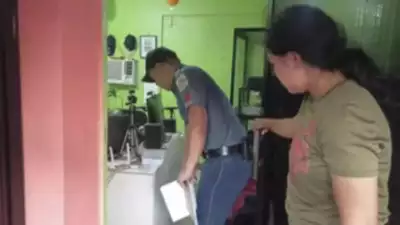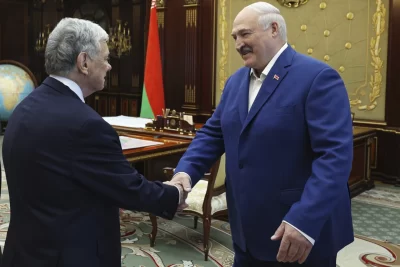
A radio anchor was fatally shot by a man inside his southern Philippine station Sunday in a brazen attack that was witnessed by people watching the program live on Facebook.
The gunman gained entry into the home-based radio station of provincial news broadcaster Juan Jumalon by pretending to be a listener. He then shot him twice during a live morning broadcast in Calamba town in Misamis Occidental province, police said.
The attacker snatched the victim’s gold necklace before fleeing with a companion, who waited outside Jumalon’s house, onboard a motorcycle, police said. An investigation was underway to identify the gunman and establish if the attack was work-related.
The Philippines has long been regarded as one of the most dangerous places for journalists in the world.
President Ferdinand Marcos Jr. strongly condemned the shooting and said he ordered the national police to track down, arrest and prosecute the killers.
The National Union of Journalists of the Philippines, a press freedom watchdog, said Jumalon was the 199th journalist to be killed in the country since 1986, when democracy returned after a “People Power” uprising toppled dictator Ferdinand Marcos, the father of the current president, and forced him and his family into U.S. exile.
“The attack is even more condemnable since it happened at Jumalon’s own home, which also served as the radio station,” the watchdog said.
A video of the attack shows the bespectacled Jumalon, 57, pausing and looking upward at something away from the camera before two shots rang out. He slumped back bloodied in his chair as a background music played on. He was pronounced dead on the way to a hospital.
The attacker was not seen on the Facebook livestream but police said they were checking if security cameras installed in the house and at his neighbors recorded anything.
In 2009, members of a powerful political clan and their associates gunned down 58 people, including 32 media workers, in a brazen execution-style attack in southern Maguindanao province. It was the deadliest single attack on journalists in recent history.
While the mass killing was later linked to a violent electoral rivalry common in many rural areas, it also showcased the threats faced by journalists in the Philippines. A surfeit of unlicensed guns and private armies controlled by powerful clans and weak law enforcement in rural regions are among the security concerns journalists face in the poverty-stricken Southeast Asian country.




